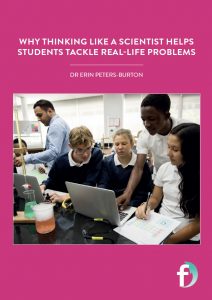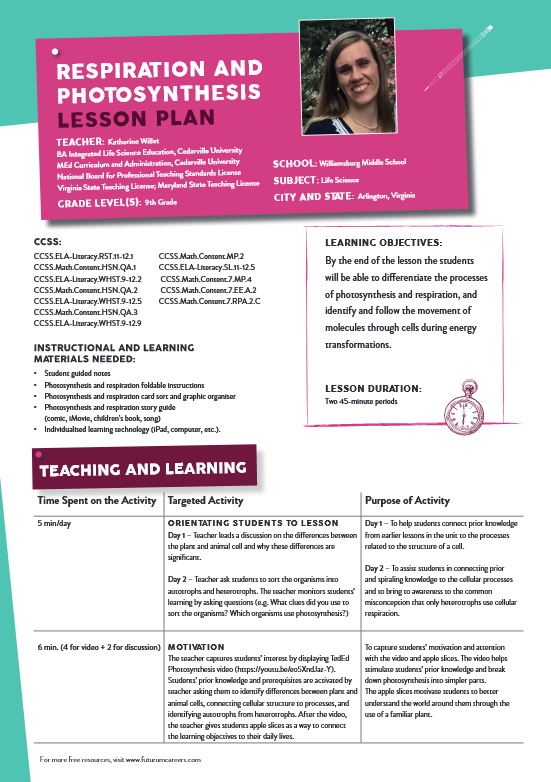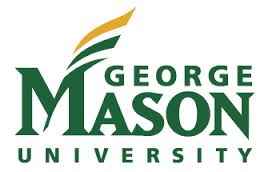Why thinking like a scientist helps students tackle real-life problems
Dr Erin Peters-Burton is the Director of the Center for Social Equity Through Science Education, George Mason University, USA. She has developed a metacognitive prompting intervention which enables teachers to help students think like a scientist
In many ways, being a schoolteacher is a challenge. Teachers are tasked with educating with differing abilities and different modes of learning. We all learn things in slightly different ways and what works for one student will not necessarily be the most effective mode of learning for another.
In recent years, one means of helping students to learn effectively that has grown in popularity is self-regulated learning (SRL). SRL refers to learning that is guided by metacognition (where students think about their thinking), strategic action (where students monitor and evaluate their progress), and motivation to learn. Self-regulated learners tend to be successful at learning because they are able to control their own learning environment – if something doesn’t work, they change their methods until they do work.
Dr Erin Peters-Burton, the Director of the Center for Social Equity Through Science Education at George Mason University in the USA, is passionate about the benefits of SRL. Her research is focused on helping students and teachers view the world through a STEM (science, technology, engineering, mathematics) lens and approach problem solving in a scientific way. Her work has culminated in the development of a metacognitive prompting intervention.
WHAT IS THE METACOGNITIVE PROMPTING INTERVENTION?
The Metacognitive Prompting Intervention is a process that helps teachers coach students on how to think like a scientist. It is based on Barry Zimmerman’s self-regulated coaching approach. “It is a systematic way to help students approach problem solving like a scientist by explaining processes such as how to use computational thinking and ways to observe the natural world to get valid data,” explains Erin. “It consists of four steps: teacher models the approach, students try the approach with the teacher’s support, student does the approach with minimal support, and then the student does the approach independently.”
WHY IS ERIN FOCUSED ON STEM SUBJECTS?
Erin never considered herself to be a ‘science person’ when she was in school. However, as she grew older, she realised that understanding the world through a STEM lens gave her a perspective that helped her work through complex issues. By developing a systematic and logical approach to learning something, students can become adept at learning new skills and knowledge. “If you wanted to learn a new language for example, you could approach this challenge through a STEM lens and research effective ways to learn a language. If you find three different ways to learn a language, you can decide which way you want to try first,” says Erin. “You pay attention to how well you are learning (taking data) and you may notice the trend that you aren’t doing very well. Then you can decide to drop the first method and try the second. When you take data on how well you learn the language with the second method, you have evidence of which method is more effective for you.”
By evaluating your progress, you can see which way of learning works best for you. Erin firmly believes that by understanding how to think in a STEM-orientated way, you can expand the ways in which you interact with the world around you.
DOES ERIN’S METACOGNITIVE PROMPTING INTERVENTION REQUIRE A WHOLE NEW WAY OF THINKING?
Not really, although it does require a slight shift in thought processes. As the success of a school has become increasingly focused on test scores, teachers have perhaps been encouraged to teach their students exactly what they need to know to achieve better test scores. Erin’s intervention requires an understanding of science and engineering principles, so the knowledge gained by students is more well-rounded. Erin and her team have done experimental studies and found that the intervention increases understanding of both disciplinary practices and content knowledge – the outcomes are better when using Erin’s intervention.
HOW SUCCESSFUL IS THE INTERVENTION THAT ERIN HAS DEVELOPED?
“We have done a series of experimental studies on the effectiveness of the intervention with almost 400 students aged 13-14. Both the experimental and the comparison group studied magnets and electricity for 4 to 8 weeks using a guided inquiry approach,” explains Erin. “The experimental group got the metacognitive prompts while the comparison group got extra time to study the concepts in the topics of magnets and electricity. We tested the students before and after the curriculum to see how well they did on the content knowledge and on scientific thinking.”
Reference
https://doi.org/10.33424/FUTURUM58
In many ways, being a schoolteacher is a challenge. Teachers are tasked with educating with differing abilities and different modes of learning. We all learn things in slightly different ways and what works for one student will not necessarily be the most effective mode of learning for another.
In recent years, one means of helping students to learn effectively that has grown in popularity is self-regulated learning (SRL). SRL refers to learning that is guided by metacognition (where students think about their thinking), strategic action (where students monitor and evaluate their progress), and motivation to learn. Self-regulated learners tend to be successful at learning because they are able to control their own learning environment – if something doesn’t work, they change their methods until they do work.
Dr Erin Peters-Burton, the Director of the Center for Social Equity Through Science Education at George Mason University in the USA, is passionate about the benefits of SRL. Her research is focused on helping students and teachers view the world through a STEM (science, technology, engineering, mathematics) lens and approach problem solving in a scientific way. Her work has culminated in the development of a metacognitive prompting intervention.
WHAT IS THE METACOGNITIVE PROMPTING INTERVENTION?
The Metacognitive Prompting Intervention is a process that helps teachers coach students on how to think like a scientist. It is based on Barry Zimmerman’s self-regulated coaching approach. “It is a systematic way to help students approach problem solving like a scientist by explaining processes such as how to use computational thinking and ways to observe the natural world to get valid data,” explains Erin. “It consists of four steps: teacher models the approach, students try the approach with the teacher’s support, student does the approach with minimal support, and then the student does the approach independently.”
WHY IS ERIN FOCUSED ON STEM SUBJECTS?
Erin never considered herself to be a ‘science person’ when she was in school. However, as she grew older, she realised that understanding the world through a STEM lens gave her a perspective that helped her work through complex issues. By developing a systematic and logical approach to learning something, students can become adept at learning new skills and knowledge. “If you wanted to learn a new language for example, you could approach this challenge through a STEM lens and research effective ways to learn a language. If you find three different ways to learn a language, you can decide which way you want to try first,” says Erin. “You pay attention to how well you are learning (taking data) and you may notice the trend that you aren’t doing very well. Then you can decide to drop the first method and try the second. When you take data on how well you learn the language with the second method, you have evidence of which method is more effective for you.”
By evaluating your progress, you can see which way of learning works best for you. Erin firmly believes that by understanding how to think in a STEM-orientated way, you can expand the ways in which you interact with the world around you.
DOES ERIN’S METACOGNITIVE PROMPTING INTERVENTION REQUIRE A WHOLE NEW WAY OF THINKING?
Not really, although it does require a slight shift in thought processes. As the success of a school has become increasingly focused on test scores, teachers have perhaps been encouraged to teach their students exactly what they need to know to achieve better test scores. Erin’s intervention requires an understanding of science and engineering principles, so the knowledge gained by students is more well-rounded. Erin and her team have done experimental studies and found that the intervention increases understanding of both disciplinary practices and content knowledge – the outcomes are better when using Erin’s intervention.
HOW SUCCESSFUL IS THE INTERVENTION THAT ERIN HAS DEVELOPED?
“We have done a series of experimental studies on the effectiveness of the intervention with almost 400 students aged 13-14. Both the experimental and the comparison group studied magnets and electricity for 4 to 8 weeks using a guided inquiry approach,” explains Erin. “The experimental group got the metacognitive prompts while the comparison group got extra time to study the concepts in the topics of magnets and electricity. We tested the students before and after the curriculum to see how well they did on the content knowledge and on scientific thinking.”
The team wasn’t surprised that the experimental group did significantly better on the scientific thinking test. What was surprising, however, was that the experimental group did significantly better in the content knowledge test – despite spending less time studying that content than the other group. These results demonstrate the far-reaching impacts of the Metacognitive Prompting Intervention: it helps students set clear goals for learning about science and reflecting on why they were taking a specific approach to their learning. “One interesting thing we saw was that when the experimental students worked in groups and they had a conflicting result or conclusion, they went back and tried the investigation again,” says Erin. “On the other hand, the comparison group resolved any conflicting information by going to the teacher. To me, that is evidence that students were learning to think like scientists in the experimental groups.”
Erin and her team are now looking into ways of using computational thinking to help high school students understand data analysis in more detail. If their outputs are half as successful as the Metacognitive Prompting Intervention, there will be some very happy students – and teachers!
 DR ERIN PETERS-BURTON
DR ERIN PETERS-BURTON
Director, Center for Social Equity Through Science Education, George Mason University, USA
FIELD OF RESEARCH: Science Education
RESEARCH PROJECT: Erin’s work is focused on developing a systematic way of helping students approach problem solving in a scientific way. Her Metacognitive Prompting Intervention consists of four steps that help students transition to STEM subjects and careers, navigate the world around them and lead better lives.
FUNDERS: National Science Foundation

DR ERIN PETERS-BURTON
Director, Center for Social Equity Through Science Education, George Mason University, USA
FIELD OF RESEARCH: Science Education
RESEARCH PROJECT: Erin’s work is focused on developing a systematic way of helping students approach problem solving in a scientific way. Her Metacognitive Prompting Intervention consists of four steps that help students transition to STEM subjects and careers, navigate the world around them and lead better lives.
FUNDERS: National Science Foundation
ABOUT SELFREGULATED LEARNING
Self-regulated learning (SRL) is a term that refers to how students come to understand their own learning processes. SRL can include a wide range of aspects of learning, including cognitive, metacognitive, behavioural, motivational and emotional. In recent years, SRL has become an extremely important area of research within the field of education.
WHAT IS A SELF-REGULATED LEARNER?
Put simply, a self-regulated learner is an individual who is acutely aware of the processes that work for them and those that don’t work or them when they are learning something new. Self-regulated learners pay particular attention to their thought processes (also known as metacognition) and change their environment or behaviours so that they can meet their goals in a more effective manner.
WHY IS IT BENEFICIAL TO BE A SELF-REGULATED LEARNER?
Erin is passionate about the benefits of becoming a self-regulated learner, which is one of the reasons she has dedicated much of her professional life to developing programmes that help students and teachers. “If you can set goals, are aware of the processes you can use to learn efficiently, and can motivate yourself to reach your goals, you can do just about anything,” says Erin. “In addition, you learn how to persevere even when you have lots of barriers to overcome to achieve your goals.”
DO SOME FIND IT HARDER TO BECOME SELF-REGULATED LEARNERS THAN OTHERS?
While all students can become self-regulated learners (educational psychologists have found that everyone can learn to self-regulate their learning), some people do find it more difficult than others. It is not a skill that people are born with so it is something that must be learned. “I think some people find it harder than others because they never had the support to think about what their goals are in learning, or how they can reach those goals,” explains Erin. “Reflecting on your learning performance is a big part of self-regulated learning and many people never had an example of what that might look like.” For that reason, having somebody to show you how to self-regulate your learning is very helpful in becoming aware of it.
CAN STUDENTS TRAIN THEMSELVES TO BE SELF-REGULATED LEARNERS OR DO THEY NEED INPUT FROM TEACHERS?
Yes! Anybody can teach and train themselves to become a self-regulated learner – and there are loads of resources out there. However, you can speed up or refine the process by receiving support and guidance from a teacher. Two heads are often better than one and having somebody to talk to about your progress towards becoming a self-regulated learner can be a big help.
BENEFITS OF SELF-REGULATED LEARNING
FOR TEACHERS
• Although teachers cannot control the individual differences in students’ ability to learn, they can compensate for these differences by teaching SRL practices. By putting the onus on students learning on their own, teachers help to level the playing field, where each individual is following methods that work for them.
• The classroom becomes an arena where each student achieves a common goal (to learn a skill or knowledge) through different methods. The harmonious atmosphere created is conducive to improved learning and will help the students during their time in school and life beyond it.
• When students become adept at learning new things in their own way, this cannot help but reflect positively on faculty members. Rather than giving students the knowledge they need to perform well on tests, teachers using SRL will imbue their students with skills and knowledge that are more far-reaching and well-rounded.
FOR STUDENTS
• SRL helps you become aware of your academic strengths and weaknesses, which fosters an ability to create strategies that help you to overcome challenges.
• Self-regulated learners can control their learning environment, which is a clear pathway to success. By directing and regulating your own actions towards learning goals, you can achieve your aims.
• Studies have shown that self-regulated learners exhibit a high sense of self-efficacy, where an individual can grasp their ability to execute courses of action required to deal with specific situations – this leads to success in and beyond school.
HOW DID DR ERIN PETERS-BURTON BECOME A SCIENCE EDUCATOR?
WHAT DID YOU IMAGINE YOURSELF DOING WHEN YOU WERE YOUNGER?
I never really thought about it. I was on my own when I was 16, so I was mostly just trying to
make ends meet by waitressing and doing other jobs. It wasn’t until I was in my 20s that I thought – is there a job out there where I am not being told what to do every minute and can think on my own? I thought teaching was a good way to become a professional.
SO, YOU STARTED OUT AS A TEACHER? WHAT DREW YOU TO THE RESEARCH SIDE OF SCIENCE EDUCATION?
I taught physics, chemistry, Earth science, and mathematics for 15 years before I got my PhD. I loved every minute of it and never thought I would leave, but I did my National Board certification and became interested in finding evidence of how students learn in science. I looked into it and found out that people did research for a living – it never occurred to me! I applied to a PhD programme and, by chance, found a Graduate Research Assistant position with a wonderful professor who paid for all of my degree. I feel that I have the best of both worlds now because I do research and make meaning out of new things, and I still get to teach university students!
WHY ARE YOU PASSIONATE ABOUT SELF-REGULATED LEARNING?
Although I didn’t know the name of it at the time, self-regulated learning has helped me in all the steps it has taken for me to become a teacher and then a researcher. As I said, I have been on my own since I was 16 and so I observed people who I felt were successful to see what their processes were. I then tried to learn those processes until I mastered them and looked for new processes to learn. For example, I wanted to go to college, but I couldn’t afford it. I learned from talking to a person at a grocery store that if you worked at a college, you could get tuition benefits. I learned what I needed to do to get a job at the nearby university and worked on those skills step by step until I had them mastered. That is how I put myself through college at the beginning.
WHAT WOULD YOU SAY TO STUDENTS WHO FIND SCIENCE DIFFICULT OR BORING?
You may find science difficult, boring or irrelevant, but there is always something you can learn from the subject if you look at the processes behind it. Think about why a scientist might want to study the current topic you are studying. What struggles might they have had? How did they overcome those struggles? How did they think about things to create innovations? Those processes are the things that you will use for a lifetime.
IS THERE ANYTHING IN YOUR LIFE YOU WISH YOU HAD DONE DIFFERENTLY?
If I had to live my life over again, I would do it in exactly the same way. Everything that I have done has helped me to understand multiple perspectives and think about things from the point of view of someone who didn’t grow up in a STEM-orientated household.
ERIN’S TOP TIPS
1. Always pay attention to your environment, your behaviour and your motivation when you attempt to learn something new. This will help you focus on what you need to succeed and give you the best chance of realising your potential.
2. Think about what works for you and forget that which does not when you are trying to meet your goals.
3. You don’t have to start by learning something difficult. Try to learn something relatively easy and take notes about the way you learn. Then try learning something more difficult and see if the same processes work. If not, try something new or seek assistance from someone!







